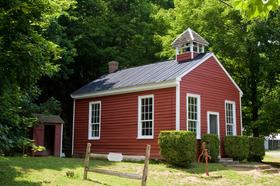Top Rankings
Norfolk School District ranks among the top 20% of public school district in Nebraska for:
Category
Attribute
Diversity
Most diverse schools (Top 1%)
Community Size
Largest student body (number of students) (Top 1%)
For the 2025 school year, there are 8 public preschools serving 1,929 students in Norfolk School District. This district's average pre testing ranking is 5/10, which is in the bottom 50% of public pre schools in Nebraska.
╬█╬█┬■╗ş Preschools in Norfolk School District have an average math proficiency score of 50% (versus the Nebraska public pre school average of 49%), and reading proficiency score of 56% (versus the 50% statewide average).
Minority enrollment is 41% of the student body (majority Hispanic), which is more than the Nebraska public preschool average of 38% (majority Hispanic).
Overview
This School District
This State (NE)
# Schools
12 Schools
608 Schools
# Students
4,541 Students
159,116 Students
# Teachers
306 Teachers
11,545 Teachers
Student : Teacher Ratio
15:1
15:1
Student By Grade
District Rank
Norfolk School District, which is ranked within the bottom 50% of all 245 school districts in Nebraska (based off of combined math and reading proficiency testing data) for the 2021-2022 school year.
The school district's graduation rate of 87% has stayed relatively flat over five school years.
Overall District Rank
#156 out of 246 school districts
(Bottom 50%)
(Bottom 50%)
Math Test Scores (% Proficient)
44%
46%
Reading/Language Arts Test Scores (% Proficient)
48%
47%
Science Test Scores (% Proficient)
66%
62%
Graduation Rate
87%
87%
Students by Ethnicity:
Diversity Score
0.55
0.57
% American Indian
2%
2%
% Asian
1%
3%
% Hispanic
30%
22%
% Black
2%
6%
% White
60%
62%
% Hawaiian
n/a
n/a
% Two or more races
5%
5%
All Ethnic Groups
District Revenue and Spending
The revenue/student of $13,222 in this school district is less than the state median of $15,464. The school district revenue/student has stayed relatively flat over four school years.
The school district's spending/student of $12,153 is less than the state median of $16,776. The school district spending/student has stayed relatively flat over four school years.
Total Revenue
$60 MM
$5,080 MM
Spending
$55 MM
$5,511 MM
Revenue / Student
$13,222
$15,464
Spending / Student
$12,153
$16,776
Best Norfolk School District ╬█╬█┬■╗ş Preschools (2025)
School
(Math and Reading Proficiency)
(Math and Reading Proficiency)
Location
Grades
Students
Rank: #11.
Bel Air Elementary School
(Math: 65-69% | Reading: 65-69%)
Rank:
Rank:
9/
Top 20%10
1101 N 18th St
Norfolk, NE 68702
(402) 644-2539
Norfolk, NE 68702
(402) 644-2539
Grades: PK-4
| 324 students
Rank: #22.
Westside Elementary School
(Math: 60-64% | Reading: 55-59%)
Rank:
Rank:
8/
Top 30%10
1703 Philip Ave
Norfolk, NE 68702
(402) 644-2561
Norfolk, NE 68702
(402) 644-2561
Grades: PK-4
| 193 students
Rank: #33.
Woodland Park Elementary School
(Math: 50-54% | Reading: 60-64%)
Rank:
Rank:
8/
Top 30%10
611 Meadow Ln
Norfolk, NE 68702
(402) 644-2565
Norfolk, NE 68702
(402) 644-2565
Grades: PK-4
| 199 students
Rank: #44.
Washington Elementary School
(Math: 45-49% | Reading: 55-59%)
Rank:
Rank:
7/
Top 50%10
1205 S 2nd St
Norfolk, NE 68702
(402) 644-2557
Norfolk, NE 68702
(402) 644-2557
Grades: PK-4
| 233 students
Rank: #55.
Lincoln Elementary School
(Math: 40-49% | Reading: 50-59%)
Rank:
Rank:
6/
Top 50%10
310 S 3rd St
Norfolk, NE 68702
(402) 644-2550
Norfolk, NE 68702
(402) 644-2550
Grades: PK-4
| 216 students
Rank: #66.
Jefferson Elementary School
(Math: 30-34% | Reading: 45-49%)
Rank:
Rank:
4/
Bottom 50%10
406 Cottonwood St
Norfolk, NE 68702
(402) 644-2546
Norfolk, NE 68702
(402) 644-2546
Grades: PK-4
| 249 students
Rank: #77.
Grant Elementary School
(Math: 30-34% | Reading: 40-44%)
Rank:
Rank:
3/
Bottom 50%10
1106 Philip Ave
Norfolk, NE 68702
(402) 644-2544
Norfolk, NE 68702
(402) 644-2544
Grades: PK-4
| 210 students
Rank: n/an/a
2500 W Norfolk Ave
Norfolk, NE 68701
(402) 644-2500
Norfolk, NE 68701
(402) 644-2500
Grades: PK
| 305 students
Recent Articles

Segregation in K-12 Education: Colonial Era
Explore the origins of educational segregation during the colonial era and the differential treatment of Native American, African American, and white students. This article delves into the historical context, policies, and societal attitudes that shaped early education in colonial America, highlighting the disparities and injustices that persisted within the schooling systems of that time.

2011 Classroom Size Update: Are Classes Still Growing Larger?
Since the recession, public school classrooms have seen major budget cuts - and many increases in class sizes. How is the situation in 2011? Read this article to find out.

Will Single Sex Classrooms Save ╬█╬█┬■╗ş Schools?
Learn about the benefits of single sex classrooms and why public schools are hoping this type of classroom will save the American school system.





